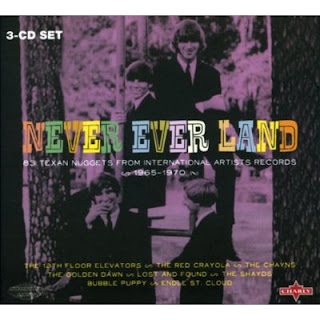
The liner notes for Robbie Robertson's version of the Band's swan song makes the case that Islands was never meant to be viewed as their studio signoff. Rather, argues Robertson, it was seen as their version of the Who's Odds and Sods and a contract fulfiller so that the quintet could release their true coda, The Last Waltz, on Warner Bros. With such modest aspirations in mind, Islands, while falling far short of the Band's creative heights, provides a pleasant listen for stalwart fans. Covers of "Ain't That a Lot of Love" and "Georgia on My Mind" (the latter recorded to boost Jimmy Carter's presidential campaign) showcase the always striking vocals of Levon Helm and Richard Manuel, respectively. And while the likes of "The Saga of Pepote Rouge," "Knockin' Lost John," and "Let the Night Fall" lack the passion and precision of prime Band, they're appealing in their own modest way. --Steven Stolder
By The Band's standards, "Islands" is less remarkable than earlier efforts; but given the fact that it was merely a contract-filler to Capitol Records, it's not as disappointing as most albums that are as business-oriented. The overall musical sound that The Band produces on "Islands" sounds distinctly like 70s easy listening radio (refer to 'Right As Rain' and 'Let the Night Fall'), a definite drawback for a group that had previously created a sound that was as unique at it had; gone was the inimitable ring of a 19th-century creole that was still easy to place with any given era in time, only vaguely present on 'Knockin' Lost John.' But the effort of the five members is still there nonetheless. The late Rick Danko's vocals on 'Street Walker' and the alluring gem 'The Saga Of Pepote Rouge' are highlights, as is that of the late Richard Manuel on a cover of 'Georgia On My Mind,' which became Jimmy Carter's theme during his run for the Presidency. Garth Hudson's keyboards are well-served, even if his saxophone--though perfected--is somehow out of place on the album, but Levon Helm's drumming and vocals are unmistakable. Robbie Robertson's biazarre guitar work that he had perfected in the past seems to be absent. His lyrics however are recognizably brilliant most of the time, echoing a feeling of sadness, weariness, and melancholy, evident on another gem, 'Livin' In a Dream' and 'Knockin' Lost John.' But those emotional lyrics are for some reason matched with disappointingly upbeat and bland music, and weak moments like 'Let the Night Fall' and a cover of the standard 'Ain't That A Lot of Love' drag the album down a bit. The title track, an instrumental, doesn't sound like a Band song at all, but rather an empty 70s-style take.For the most part, "Islands" is worth the taking and much more enjoyable than most of The Band's 90s output. It's hard to ignore the fact that most of the genuine feeling is absent, and a lot of aspects suffer as a result.













 En la banda de Dorsey hizo una buena amistad con Ray McKinley. Cuando McKinley abandonó la banda de Dorsey para formar una orquesta con el trombonista Will Bradley, Slack le acompañó y se reveló como una pieza fundamental en los números boogie-woogie del nuevo grupo. Freddie dejó a McKinley y a Bradley en 1941 y formó su propia orquesta en 1942. Siguió los pasos de su antiguo líder, encabezando el movimiento boogie-woogie de la época. Su banda se convirtió en una de las primeras que firmaron con el recién fundado sello Capitol, al que proporcionó su primer éxito: "Cow Cow Boogie". La vocalista más famosa de esta banda fue Ella Mae Morse y trabajó para ellos como arreglista Les Baxter.
En la banda de Dorsey hizo una buena amistad con Ray McKinley. Cuando McKinley abandonó la banda de Dorsey para formar una orquesta con el trombonista Will Bradley, Slack le acompañó y se reveló como una pieza fundamental en los números boogie-woogie del nuevo grupo. Freddie dejó a McKinley y a Bradley en 1941 y formó su propia orquesta en 1942. Siguió los pasos de su antiguo líder, encabezando el movimiento boogie-woogie de la época. Su banda se convirtió en una de las primeras que firmaron con el recién fundado sello Capitol, al que proporcionó su primer éxito: "Cow Cow Boogie". La vocalista más famosa de esta banda fue Ella Mae Morse y trabajó para ellos como arreglista Les Baxter.

























